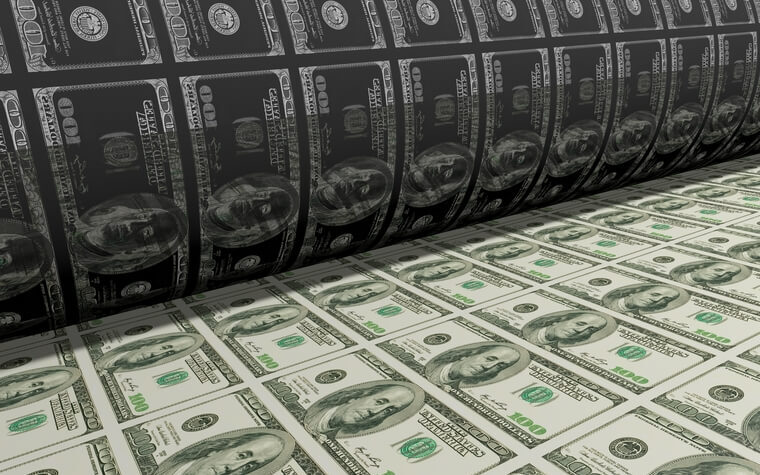This week’s inflation news roiled financial markets. A worse-than-expected core inflation report on Wednesday sent stocks sharply lower. Prices jumped 0.8% in April, much higher than the 0.2% expectation. That’s missing by a country mile.
And when you dig into the data, it gets stranger. Here’s a chart that should never exist. Ever.
Vehicles are now appreciating assets. Welcome to the future. pic.twitter.com/3mHjGA8GI3
— Ramp Capital (@RampCapitalLLC) May 12, 2021
In the strange post-pandemic world, it seems that used cars are appreciating assets. The price jump was the highest ever recorded. And if the global semiconductor shortage creates more production issues with new cars, this might be just the beginning.
But is this really inflation, or is this just some fluke that will resolve itself with time? If a nasty drought parches the corn crop one year and the price of corn jumps for a season, most people would agree that’s not inflation.
Is This … Inflation?
So, how do we know for sure that it really is inflation we’re seeing and not just a “transitory” issue — to use the Federal Reserve’s words?
I don’t know what inflation is and honestly at this point I’m too embarrassed to ask
— Dan McMurtrie (@SuperMugatu) May 12, 2021
Well, at least Mr. McMurtrie is honest here. We won’t know if this is real inflation or just noise until after the fact. But if it’s just noise, it’s getting loud.
The April month-over-month inflation spike was the largest in 40 years. One data point doesn’t make a trend, of course. And it does have a good explanation. COVID-19 restrictions loosened further, and consumers that have been unwilling or unable to get out and spend money are eager to do just that. Supply hasn’t been able to keep up with the sudden demand spike. And that means rising prices.
There just isn't a good historical analog for today's core CPI print in the post-70s era.
I can tell you that what it represents is consumer demand rebounding faster than the economy can create supply in the short term. That's a *good* thing for corporate profits. pic.twitter.com/tJD5kAoooy
— Guy LeBas (@lebas_janney) May 12, 2021
But could the Fed be right? Is the price spike transitory?
What Comes Next
Maybe. The pandemic took a wrecking ball to global supply chains, but that’s not the sort of thing that lasts forever. It’s hard to imagine computer chips will be in short supply a year or two from now.
Furthermore, the demand bump should fade once life settles back into normalcy and the government stimulus gravy train winds down.
But what if that’s not the case? What if the Fed has painted itself into a corner and it can’t back off of its stimulus programs without killing the economy? These “transitory” price hikes may become actual inflation.
In Money & Markets, we’ve made our position clear. We think a little inflation protection only makes sense. You can play this different ways, of course. We’ve recommended gold for months, and even select gold miners in our premium newsletter, Green Zone Fortunes. We’ve also recommended keeping at least a little money in cryptocurrencies and commodities.
But perhaps the best way to stay ahead of inflation is to be opportunistic. Look for growth where you can find it. There’s always a bull market in something, and we believe that genomics and DNA-based medicine may be the single biggest opportunity of the next decade. To learn more about the technology that my colleague and chief investment strategist Adam O’Dell calls “Imperium,” click here.
To safe profits,
Charles Sizemore
Editor, Green Zone Fortunes
Charles Sizemore is the editor of Green Zone Fortunes and specializes in income and retirement topics. Charles is a regular on The Bull & The Bear podcast. He is also a frequent guest on CNBC, Bloomberg and Fox Business.
